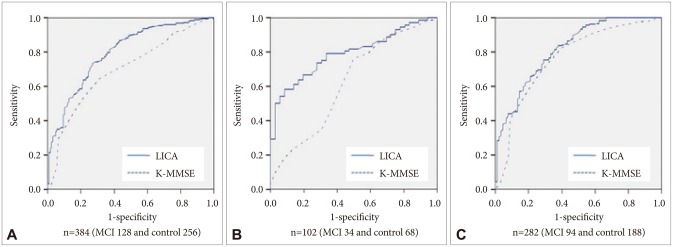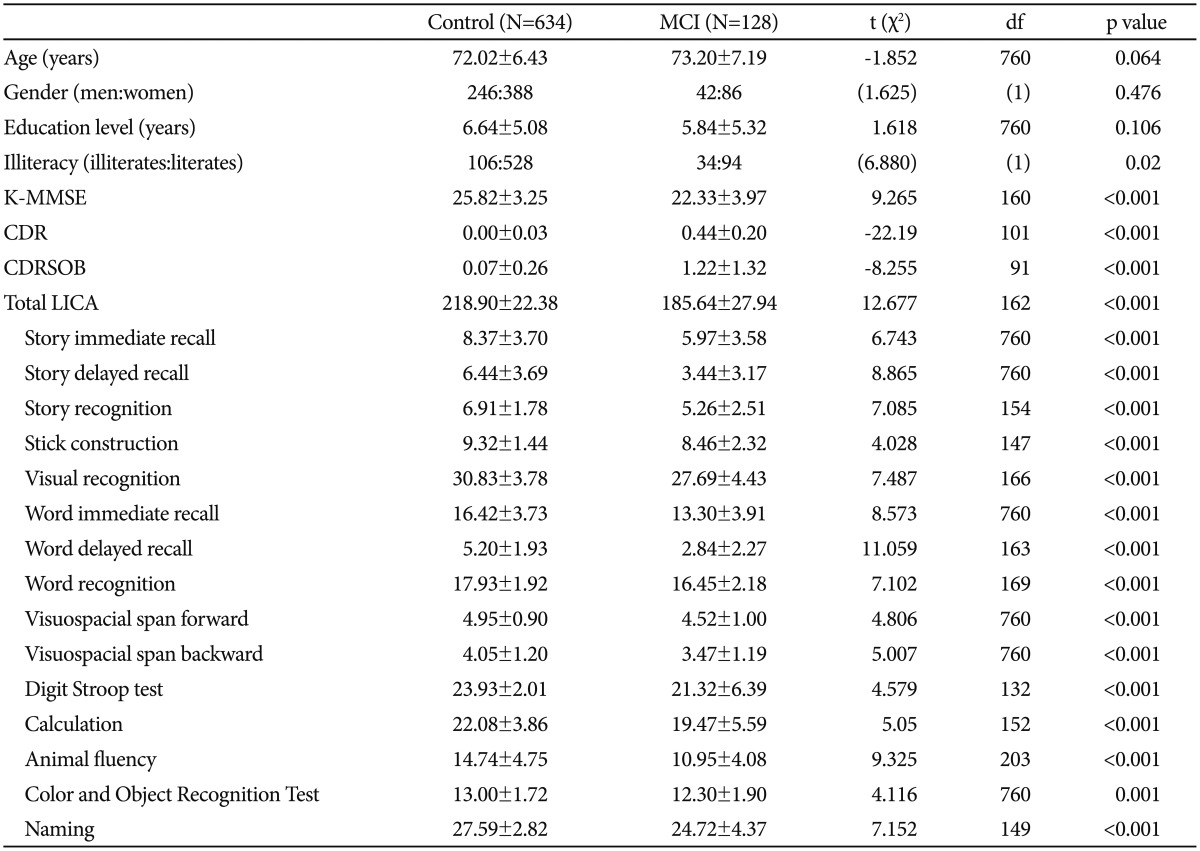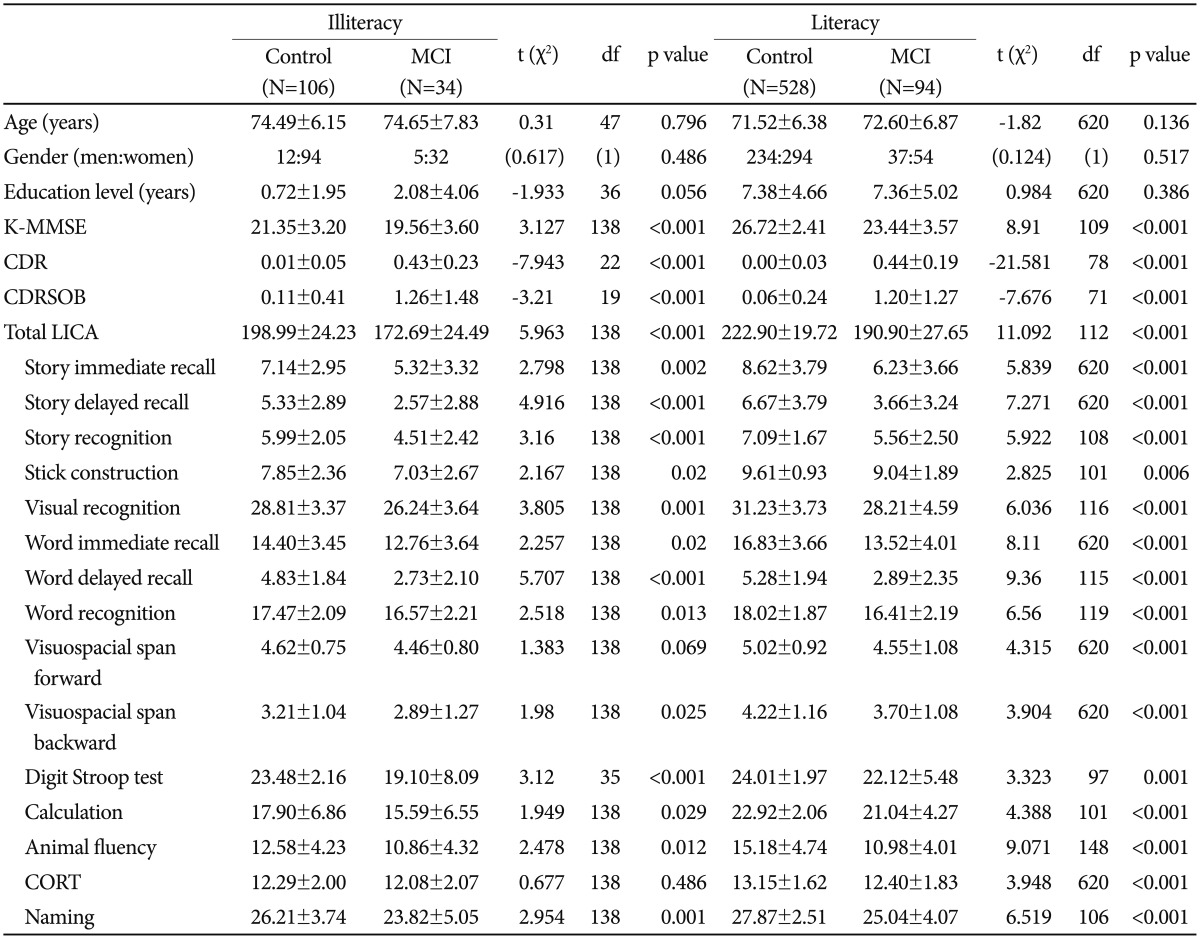1. Petersen RC, Doody R, Kurz A, Mohs RC, Morris JC, Rabins PV, et al. Current concepts in mild cognitive impairment. Arch Neurol 2001;58:1985-1992. PMID:
11735772.


2. Bruscoli M, Lovestone S. Is MCI really just early dementia? A systematic review of conversion studies. Int Psychogeriatr 2004;16:129-140. PMID:
15318760.


3. Dubois B, Albert ML. Amnestic MCI or prodromal Alzheimer's disease? Lancet Neurol 2004;3:246-248. PMID:
15039037.


4. Busse A, Hensel A, Guhne U, Angermeyer MC, Riedel-Heller SG. Mild cognitive impairment: long-term course of four clinical subtypes. Neurology 2006;67:2176-2185. PMID:
17190940.


5. Seo SW, Im K, Lee JM, Kim YH, Kim ST, Kim SY, et al. Cortical thickness in single-versus multiple-domain amnestic mild cognitive impairment. Neuroimage 2007;36:289-297. PMID:
17459730.


6. Linn RT, Wolf PA, Bachman DL, Knoefel JE, Cobb JL, Belanger AJ, et al. The 'preclinical phase' of probable Alzheimer's disease. A 13-year prospective study of the Framingham cohort. Arch Neurol 1999;52:485-490. PMID:
7733843.

7. Salmon DP, Thomas RG, Pay MM, Booth A, Hofstetter CR, Thal LJ, et al. Alzheimer's disease can be accurately diagnosed in very mildly impaired individuals. Neurology 2002;59:1022-1028. PMID:
12370456.


8. Dickerson BC, Sperling RA, Hyman BT, Albert MS, Blacker D. Clinical prediction of Alzheimer disease dementia across the spectrum of mild cognitive impairment. Arch Gen Psychiatry 2007;64:1443-1450. PMID:
18056553.



9. Petersen RC, Thomas RG, Grundman M, Bennett D, Doody R, Ferris S, et al. Vitamin E and donepezil for the treatment of mild cognitive impairment. N Engl J Med 2005;352:2379-2388. PMID:
15829527.


10. Rozzini L, Chilovi BV, Bertoletti E, Conti M, Del Rio I, Trabucchi M, et al. Angiotensin converting enzyme (ACE) inhibitors modulate the rate of progression of amnestic mild cognitive impairment. Int J Geriatr Psychiatry 2006;21:550-555. PMID:
16642542.


13. Baiyewu O, Unverzagt FW, Lane KA, Gureje O, Ogunniyi A, Musick B, et al. The Stick Design test: a new measure of visuoconstructional ability. J Int Neuropsychol Soc 2005;11:598-605. PMID:
16212687.


14. Ostrosky-Solis F, Ardila A, Rosselli M, Lopez-Arango G, Uriel-Mendoza V. Neuropsychological test performance in illiterate subjects. Arch Clin Neuropsychol 1998;13:645-660. PMID:
14590626.


15. Petersson KM, Reis A, Ingvar M. Cognitive processing in literate and illiterate participants: a review of some recent behavioral and functional neuroimaging data. Scand J Psychol 2001;42:251-267. PMID:
11501739.


16. Reis A, Faísca L, Ingvar M, Petersson KM. Color makes a difference: two-dimensional object naming in literate and illiterate subjects. Brain Cogn 2006;60:49-54. PMID:
16271820.


17. Choi SH, Shim YS, Ryu SH, Ryu HJ, Lee DW, Lee JY, et al. Validation of the Literacy Independent Cognitive Assessment. Int Psychogeriatr 2011;23:593-601. PMID:
20843392.


18. Christensen KJ, Multhaup KS, Nordstrom S, Voss K. A cognitive battery for dementia: development and measurement characteristics. Psychol Assess 1991;3:168-174.

19. Kang Y, Na DL, Han SH. A Validity study on the Korean Mini-Mental State Examination (K-MMSE) in dementia patients. J Korean Neurol Assoc 1997;15:300-308.
20. Kang SJ, Choi SH, Lee BH, Kwon JC, Na DL, Han SH. The reliability and validity of the Korean Instrumental Activities of Daily Living (K-IADL). J Korean Neurol Assoc 2002;20:8-14.
21. Winblad B, Palmer K, Kivipelto M, Jelic V, Fratiglioni L, Wahlund LO, et al. Mild cognitive impairment-beyond controversies, towards a consensus: report of the International Working Group on Mild Cognitive Impairment. J Intern Med 2004;256:240-246. PMID:
15324367.


22. Kang YW, Na DL. Seoul Neuropsychological Screening Battery. Incheon: Human Brain Research and Consulting Co; 2003.
23. Benson DF, Barton MI. Disturbances in constructional ability. Cortex 1970;6:19-46. PMID:
5426574.


24. Milner B. Interhemispheric differences in the localization of psychological processes in man. Br Med Bull 1971;27:272-277. PMID:
4937273.


25. Patterson K, Nestor PJ, Rogers TT. Where do you know what you know? The representation of semantic knowledge in the human brain. Nat Rev Neurosci 2007;8:976-987. PMID:
18026167.


26. Albert MS, DeKosky ST, Dickson D, Dubois B, Feldman HH, Fox NC, et al. The diagnosis of mild cognitive impairment due to Alzheimer's disease: recommendations from the National Institute on Aging-Alzheimer's Association workgroups on diagnostic guidelines for Alzheimer's disease. Alzheimers Dement 2011;7:270-279. PMID:
21514249.



27. Prencipe M, Casini AR, Ferretti C, Lattanzio MT, Fiorelli M, Culasso F. Prevalence of dementia in an elderly rural population: effects of age, sex, and education. J Neurol Neurosurg Psychiatry 1996;60:628-633. PMID:
8648328.



28. Ngandu T, von Strauss E, Helkala EL, Winblad B, Nissinen A, Tuomilehto J, et al. Education and dementia: what lies behind the association? Neurology 2007;69:1442-1450. PMID:
17909157.


29. Lee JY, Chang SM, Jang HS, Chang JS, Suh GH, Jung HY, et al. Illiteracy and the incidence of Alzheimer's disease in the Yonchon County survey, Korea. Int Psychogeriatr 2008;20:976-985. PMID:
18452643.


30. Choi SH, Kim SY, Na HR, Kim BK, Yang DW, Kwon JC, et al. Effect of ApoE genotype on response to donepezil in patients with Alzheimer's disease. Dement Geriatr Cogn Disord 2008;25:445-450. PMID:
18401173.














